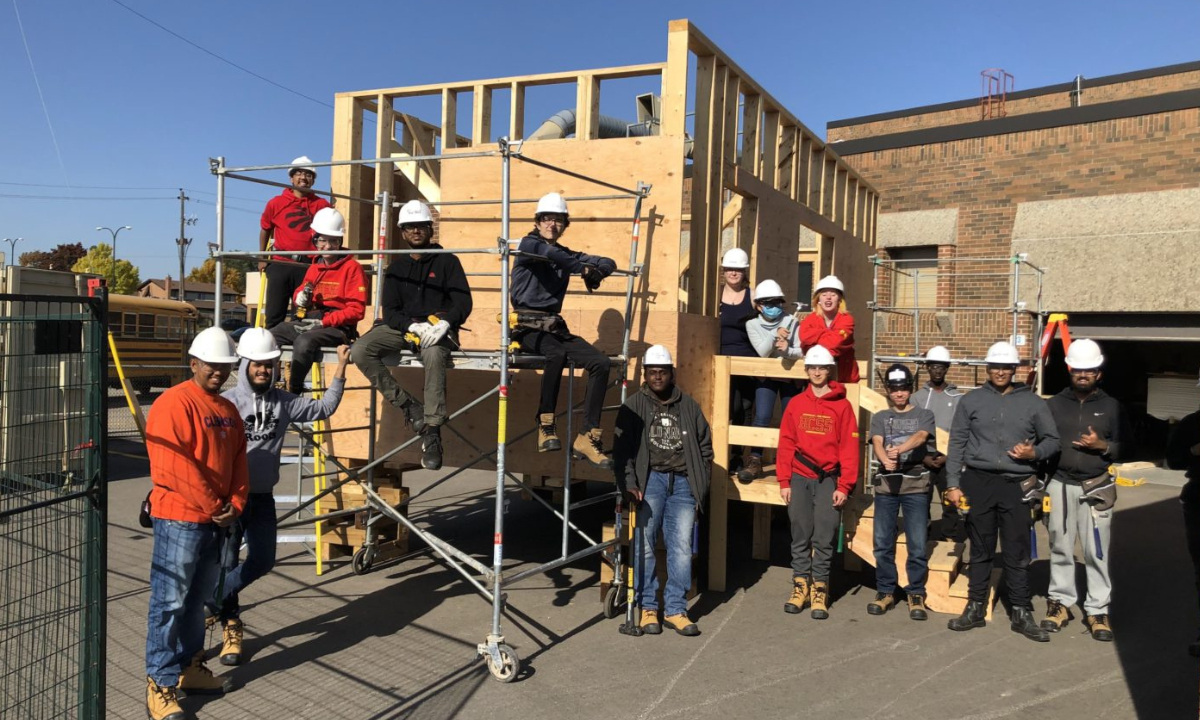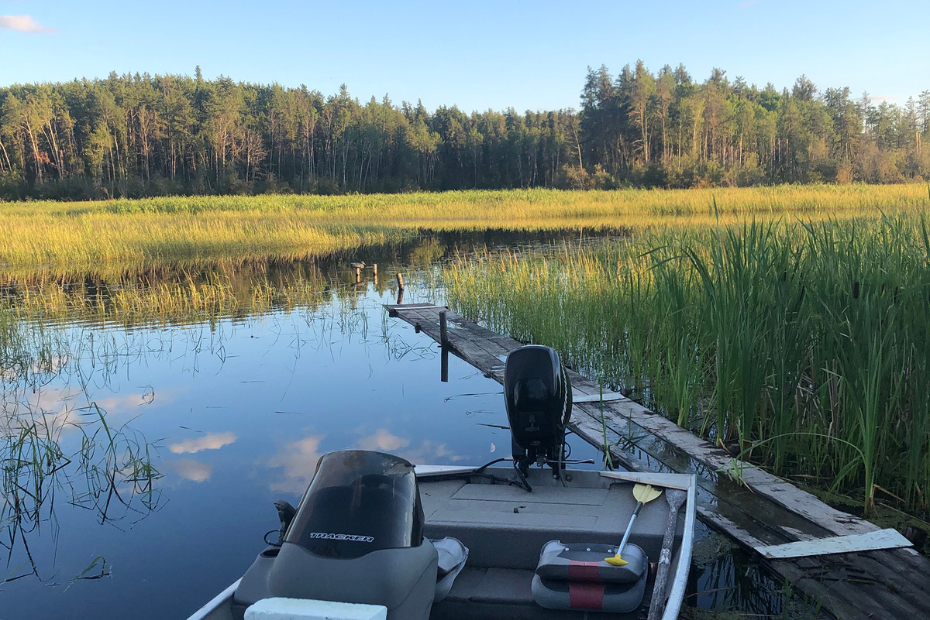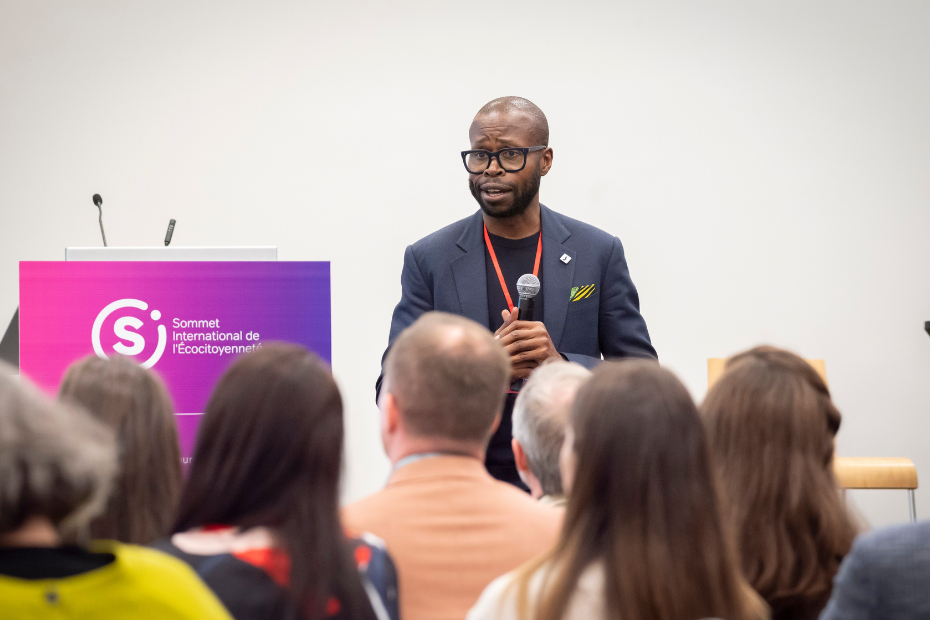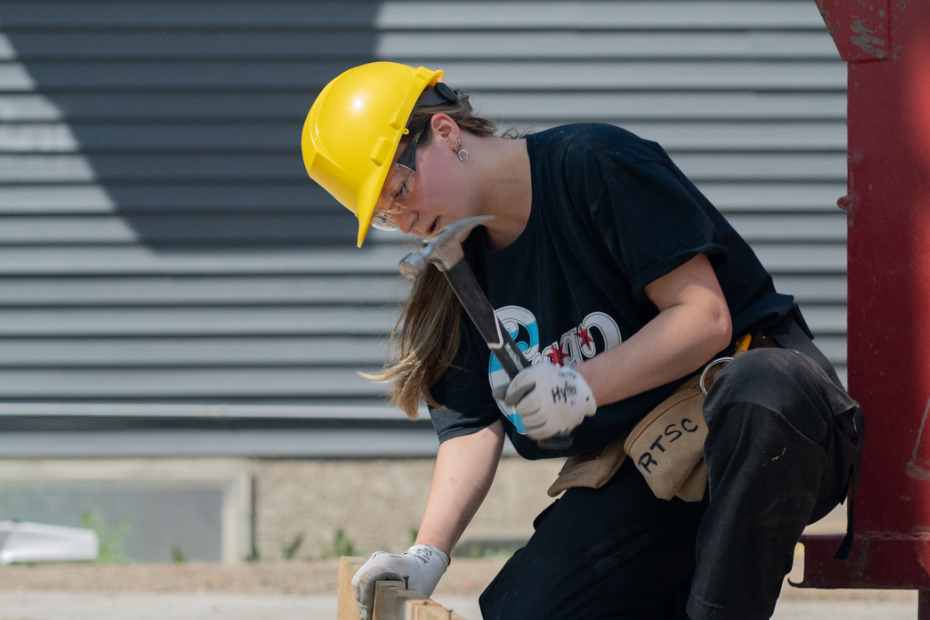The sun shines into the home being built behind Judith Nyman Senior Secondary in Brampton, Ontario. Frank Meleca, head of the Technology department at Judith Nyman, shows off the in-floor heating, the space-saving bathroom and the spot where a pull-down bed will go — this will be someone’s home, built by enthusiastic students as part of their school day.
As part of Habitat for Humanity’s Tiny Home program, students and teachers assemble homes for Indigenous communities. The smaller dwellings are ideal for single people or couples and allow communities to offer low-cost housing solutions. Faced with growing demand, Tiny Homes provides a new solution while teaching youth valuable skills.
“This is the first experience we’ve had building a home for an Indigenous community, which is amazing. We’re hoping that this continues. There’s a buzz going around the school. It just opens up so many great conversations. It’s not only the build, but we’re also learning about Indigenous communities,” Meleca says.
Building skills and affordable housing
As the project comes to life, Meleca’s students have been working hard learning the skills needed to build a tiny home. In a past collaboration with Habitat for Humanity, he would bring students out to a build site to work on a house in their hometown.
For safety reasons, only students 16 and older could be on site, and the time needed to travel to and from limits the time they can spend on actual construction. At a certain point, someone asked what it could look like if instead of bringing youth to work at Habitat for Humanity, there was a way to bring the Habitat experience to the youth.
In 2022, the RBC Foundation provided a grant of $10,000 to support the construction expenses of one Tiny Home by students in the Halton District School Board during Phase 1 of the program. Members of Team RBC took part in a building day to put the finishing touches on one of the homes. For the second phase, the Foundation has granted $25,000.
“RBC is incredibly proud to support this program. Our Future Launch Program is all about preparing youth for their futures and building future community members who understand the importance of helping those in need,” says Rick Atherton, RBC’s Regional Vice President for Halton. “This partnership provides a great learning opportunity, exposing youth in our region to the highly sought-after trades, as well as Indigenous communities and culture. And bringing this build onsite to the school means the entire school community can benefit as well.”
Building at the school doesn’t just save travel time and provide skills training to youth under the age of 16, it also provides an opportunity for the whole school community to watch the progress and share in the lessons about housing and Reconciliation.
Building interest in skilled trades
Habitat for Humanity’s CEO, Eden Grodziński, is excited about the project on multiple levels. “We know that there is a real shortfall in skilled trades right now. We know that women don’t make up a large portion of people in skilled trades. What has been really thrilling to me is to be seeing the youth engagement in the program,” she reflects.
“Looking at different career paths, they understand the opportunities within the housing sector. Whether or not they go straight into construction, there’s a number of different trades they’ve been exposed to. They learn everything from reading a blueprint to installing a toilet. Whether or not they actually go into construction or use that to repair their own home when they are older, it’s really useful,” she elaborates.
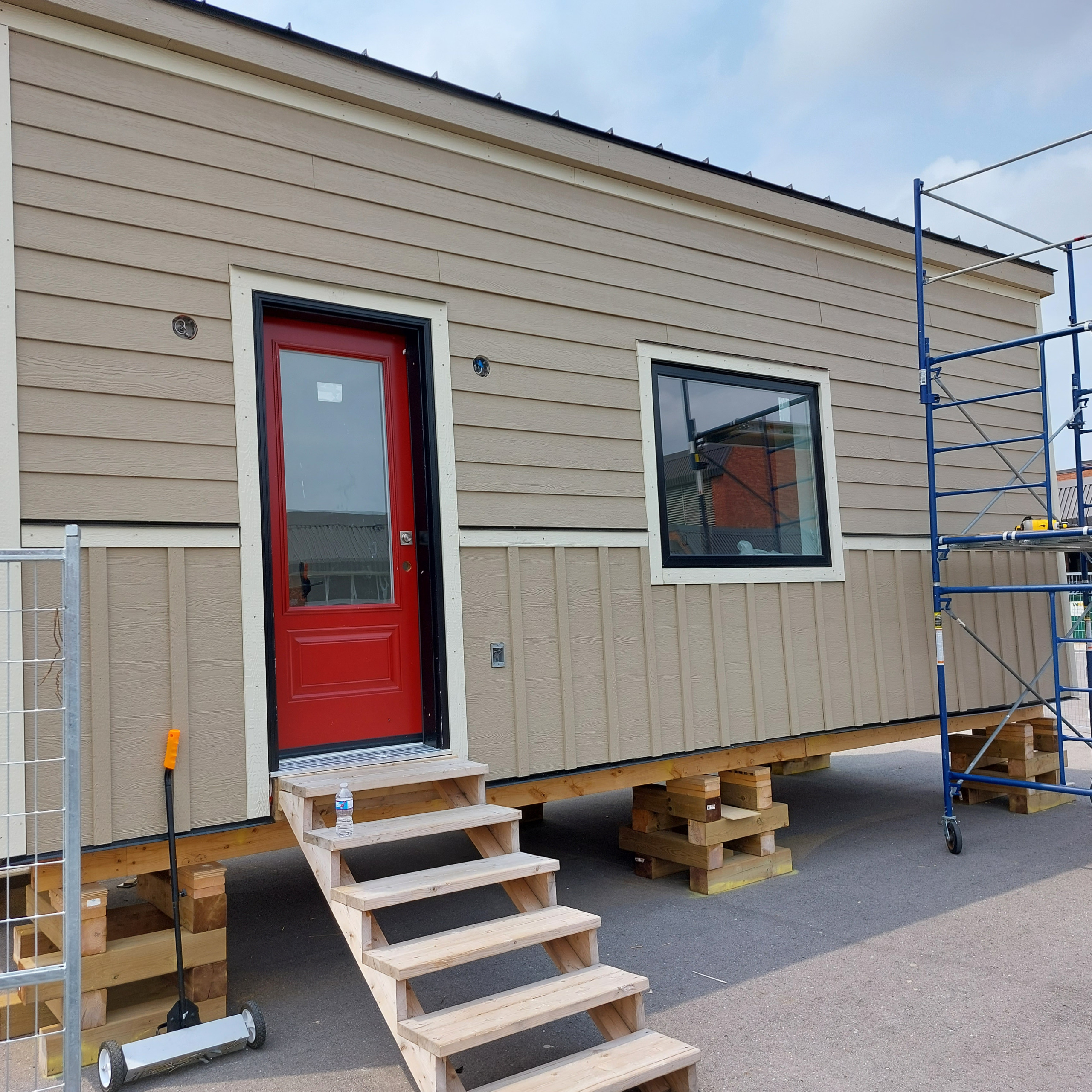
Image: The tiny home built by teachers and students at Judith Nyman Senior Secondary in Brampton, Ontario
Empowering youth to impact their community
In many municipalities, bylaws and zoning are barriers to adding tiny homes to the housing mix. First Nations communities don’t have the same restrictions, which has created an opportunity to provide additional housing to First Nations communities that is very affordable for members.
The skill-building component makes the project particularly exciting for the Saugeen community. “Saugeen likes to look for projects that not only provide a service but also teach skills or build capacity. It’s been a great pilot project,” says Melissa Snowden, a Saugeen First Nation Councillor.
“Not only does it provide skills for the youth, but it’s also really great that we’re going to get some more units for our community as we are in a housing shortage. We’re really grateful for the work put into it and the donations that have been able to make this happen,” Snowden continues.
The home for Saugeen First Nation is being built with donated materials, and students are volunteering their time, so the only cost to the community will be the work to prepare the sites for the 230 square-foot units.
Listening to members of communities who have participated in the Tiny Homes project describe the program as “Reconciliation in action” which warmed Grodzinski’s heart, and she’s got a big vision for the program’s future
Tiny homes, big vision
“We’re very thankful to groups like RBC for coming and helping us sponsor the program. Right now, Habitat is not a government-funded organization. Our funding comes from foundations, corporations or individuals who can donate. One of the things we’re looking for as we move forward is how we can get some sustainable funding for this program so that we can look at whether we can expand it,” Grodzinski explains, reflecting on what could come next for the Tiny Home project.
With Habitat for Humanity’s Tiny Homes Program, big impacts are possible, from the classroom to the community to the construction industry. In opening doors to new homes, other doors are being opened for trade careers and better relationships with Indigenous communities. Students learn about the need for housing, get work experience, receive instruction on the technical skills needed to build a shelter, and have a chance to see how they can make a difference, one tiny step (and Tiny Home) at a time.
This article is intended as general information only and is not to be relied upon as constituting legal, financial or other professional advice. A professional advisor should be consulted regarding your specific situation. Information presented is believed to be factual and up-to-date but we do not guarantee its accuracy and it should not be regarded as a complete analysis of the subjects discussed. All expressions of opinion reflect the judgment of the authors as of the date of publication and are subject to change. No endorsement of any third parties or their advice, opinions, information, products or services is expressly given or implied by Royal Bank of Canada or any of its affiliates.








